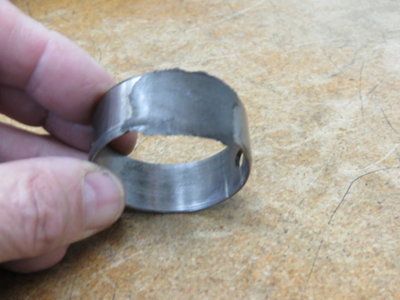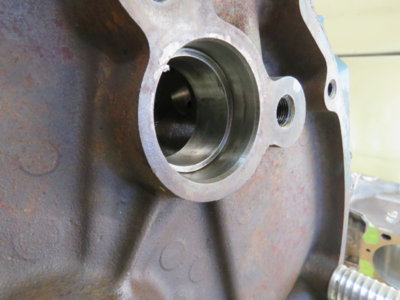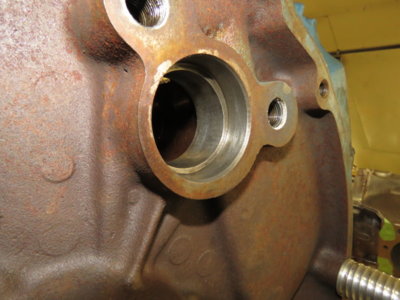451Mopar
Well-Known Member
As mentioned, you don't want the piston to hit the head. Don't worry about a few tenths of compression ratio.
DCR is really a re-calculation of compression ratio from the intake valve closing point, but it is used as a comparison tool more than any actual specific value.
The DCR calculation is a bit misleading in the "Dynamic" part, the value is only correct at zero RPM, and that is if you can actually determine the exact closing point of the intake valve. Some Calculations are done using "Advertised" duration @ 0.006" (assumes the valve is closed at 0.006" of tappet lift due to valve train clearances.)
Others with solid cams may use the 0.020" duration numbers to account for lash, and then some just use the 0.050" numbers knowing the valve is almost closed, but getting a different DCR number. As mentioned the number is really a comparison tool to gauge against other known builds. It helps determine low rpm torque, and gives some insight at to how the engine will react to different octane fuels.
The problem is the DCR is only a small part of estimating octane requirements.
The DCR or compression, as it relates to octane is helpful in estimating the rise in air/fuel temperature as it is compressed, but the number does not actually tell the amount of air/fuel captured, which will change with RPM. It also does not account for ignition timing, intake air temperature, engine temperature, chamber design, spark plug location, piston to head clearance, and other factors like loading, valve and seat material type, and other factors like tuning and how the engine is loaded.
All these factors and more go into estimating how hot the air/fuel mixture can get before it pre-ignites. Think of a Diesel engine, the heat of the compresses air is what ignites the injected fuel.
Anyhow, that is why it is used mainly to compare known combinations.
The Basic calculations and such can be found at the Victory Library:
http://victorylibrary.com/mopar/cam-tech-c.htm
DCR is really a re-calculation of compression ratio from the intake valve closing point, but it is used as a comparison tool more than any actual specific value.
The DCR calculation is a bit misleading in the "Dynamic" part, the value is only correct at zero RPM, and that is if you can actually determine the exact closing point of the intake valve. Some Calculations are done using "Advertised" duration @ 0.006" (assumes the valve is closed at 0.006" of tappet lift due to valve train clearances.)
Others with solid cams may use the 0.020" duration numbers to account for lash, and then some just use the 0.050" numbers knowing the valve is almost closed, but getting a different DCR number. As mentioned the number is really a comparison tool to gauge against other known builds. It helps determine low rpm torque, and gives some insight at to how the engine will react to different octane fuels.
The problem is the DCR is only a small part of estimating octane requirements.
The DCR or compression, as it relates to octane is helpful in estimating the rise in air/fuel temperature as it is compressed, but the number does not actually tell the amount of air/fuel captured, which will change with RPM. It also does not account for ignition timing, intake air temperature, engine temperature, chamber design, spark plug location, piston to head clearance, and other factors like loading, valve and seat material type, and other factors like tuning and how the engine is loaded.
All these factors and more go into estimating how hot the air/fuel mixture can get before it pre-ignites. Think of a Diesel engine, the heat of the compresses air is what ignites the injected fuel.
Anyhow, that is why it is used mainly to compare known combinations.
The Basic calculations and such can be found at the Victory Library:
http://victorylibrary.com/mopar/cam-tech-c.htm


















